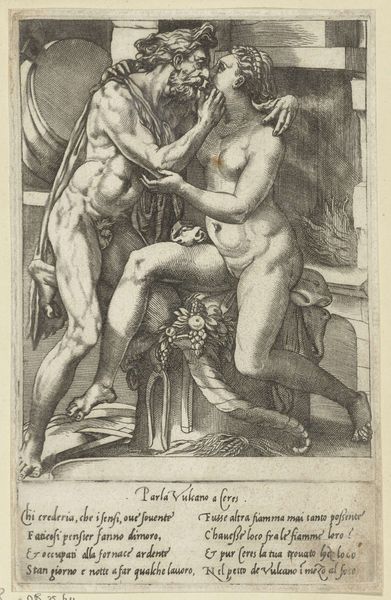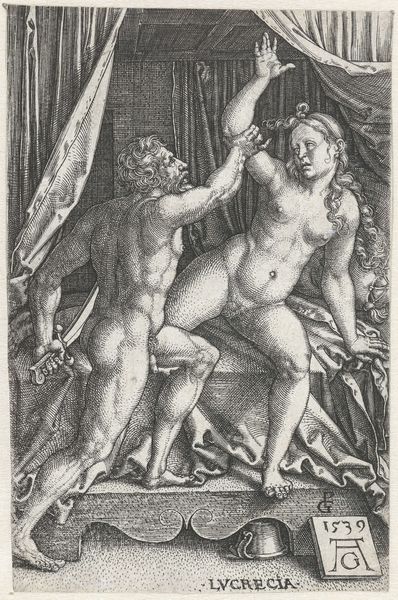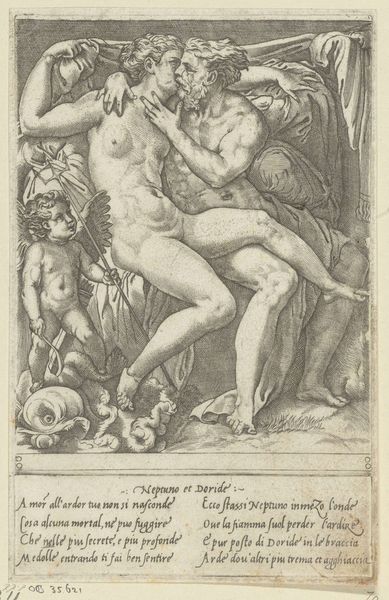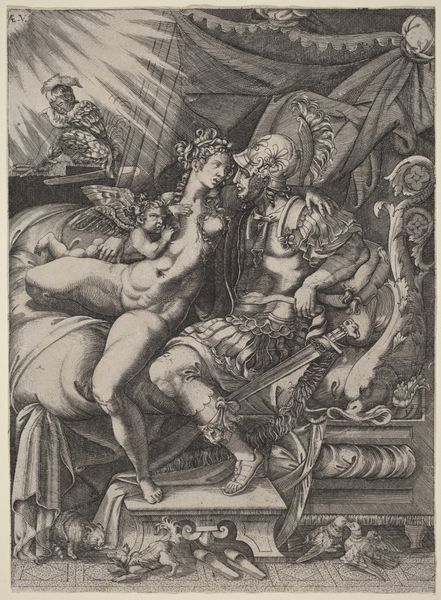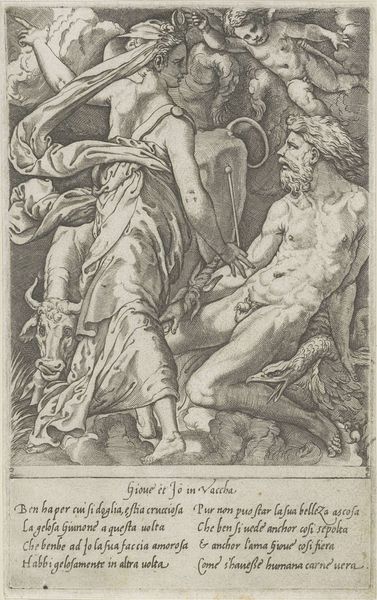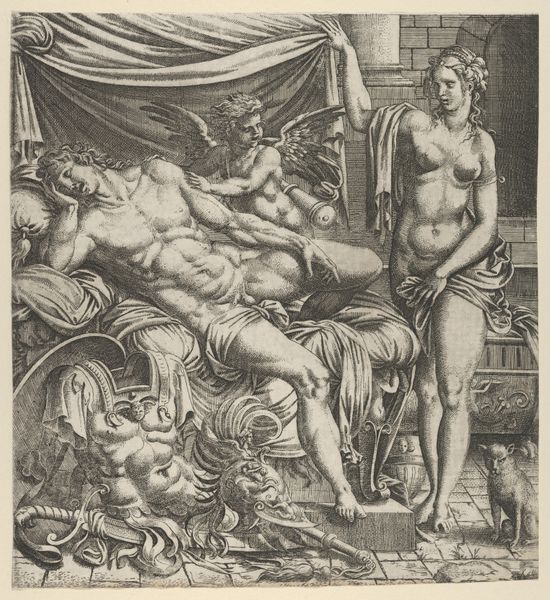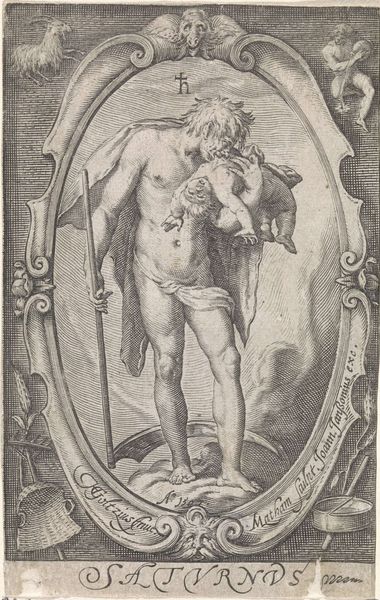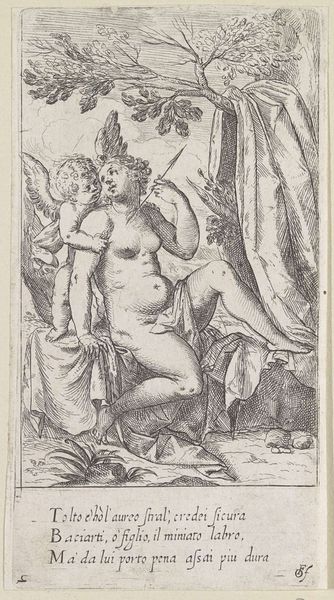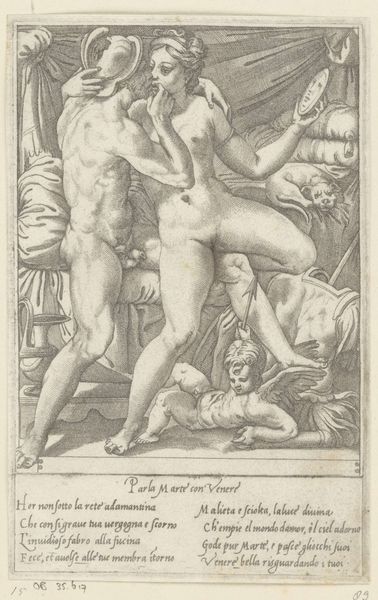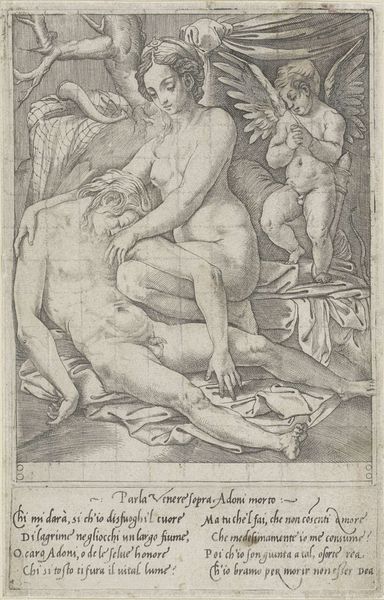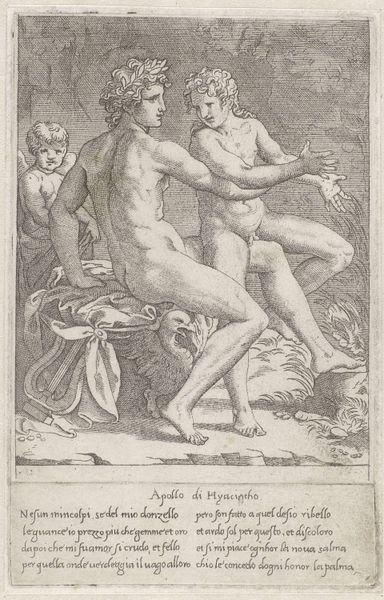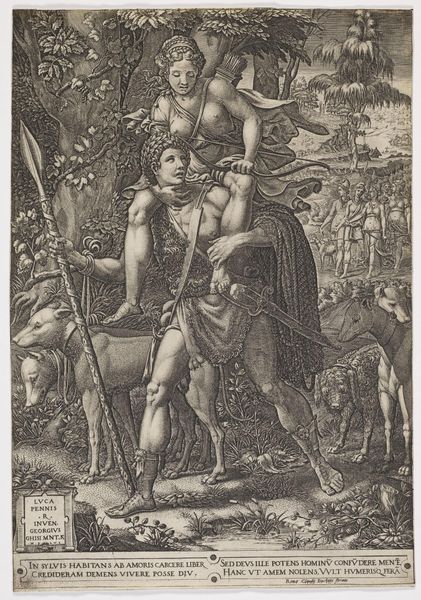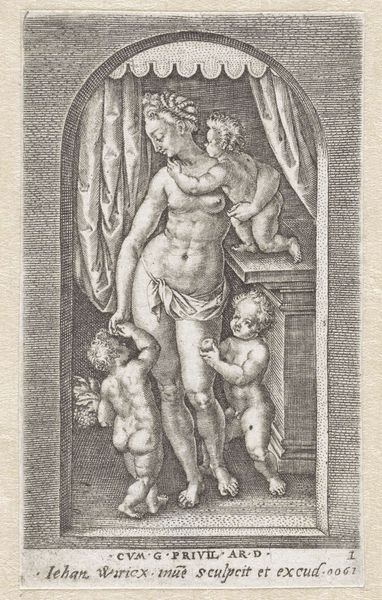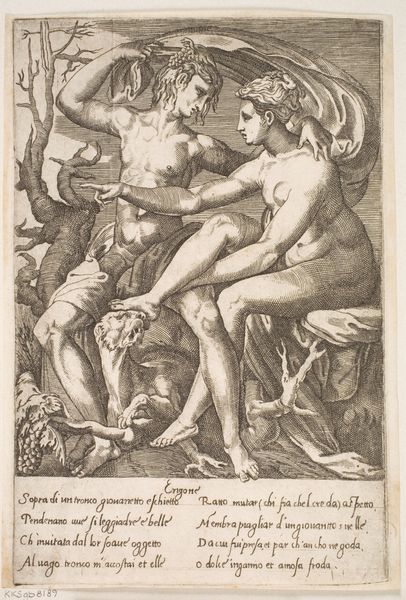
Lucretia en Sextus Tarquinius 1553
print, engraving
# print
#
pen illustration
#
pen sketch
#
pencil sketch
#
figuration
#
genre-painting
#
history-painting
#
northern-renaissance
#
nude
#
engraving
#
erotic-art
Dimensions: height 114 mm, width 68 mm
Copyright: Rijks Museum: Open Domain
Heinrich Aldegrever made this small print, "Lucretia and Sextus Tarquinius," using engraving, a technique where lines are incised into a metal plate, which is then inked and printed. The impact of this process is clear in the image's appearance, with its stark contrast and precise detail. The engraver's skill is evident in the delicate rendering of textures, from the heavy drapery to the characters' skin. Each line is carefully placed to create a sense of depth and drama. Engraving, a labor-intensive process, was crucial for disseminating images and ideas in the 16th century. The print's small size allowed for mass production, making it accessible to a wider audience. This relates to early capitalism, where reproducible images played a key role in spreading information and shaping public opinion. The work involved in creating such a print, from the initial design to the final impression, reflects the evolving relationship between art, craft, and commerce during the Renaissance. Ultimately, understanding the material and making of this artwork gives us insight into the social and cultural context of its creation.
Comments
No comments
Be the first to comment and join the conversation on the ultimate creative platform.
